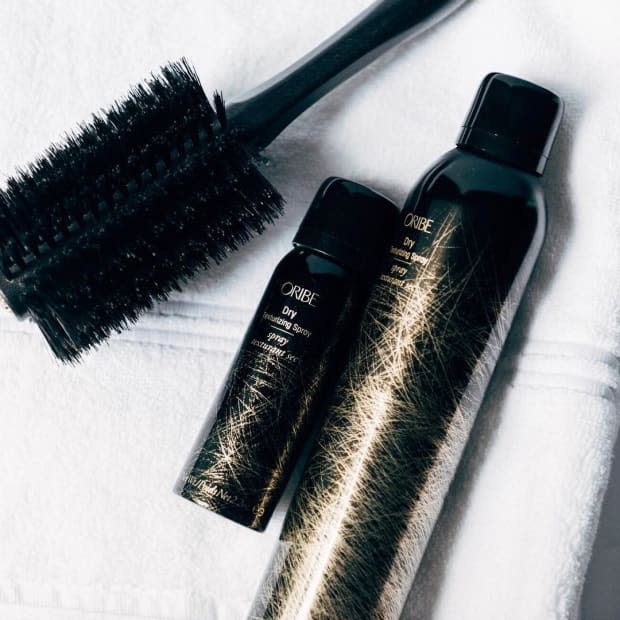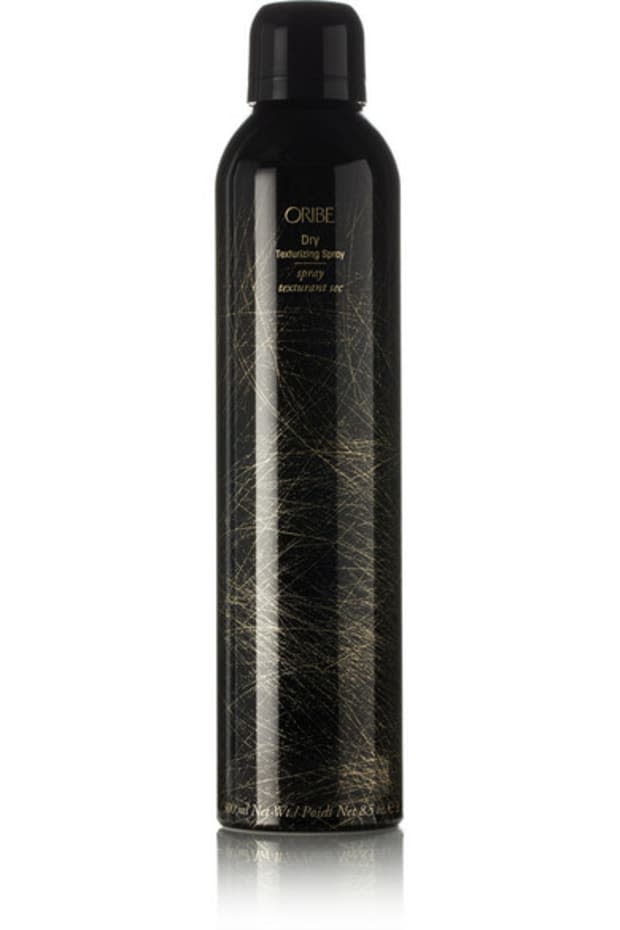An Oral History of How Oribe Dry Texturizing Spray Became a Cult-Favorite Product for Anyone With Hair
The product created an entirely new category in hair care.

In this series, we will take a look at the historical evolution of how iconic beauty products came into existence and grew so popular that they became cultural touchstones in their own right.
Nowadays, it seems as though you can't go anywhere without seeing every woman and her mother wearing "model-off-duty" hair, but there was time when that tousled-yet-voluminous, cool-girl texture wasn't exactly de rigueur. A mere eight years ago, the look took a lot of not-quite-right products and some seriously skilled hands to achieve. When Oribe introduced its Dry Texturizing Spray in 2010, though, all of that changed. The now cult-classic product provided the texturizing element and some of the oil-absorbing benefits of a dry shampoo but left hair soft, shiny and powder-free. "It's basically magic in a can," says Oribe president and co-founder Daniel Kaner of the formula.
"Dry," as it has come to be known in beauty industry circle shorthand, has only grown in popularity since its inception. According to Kaner, one can is sold every minute. It has racked up an astonishing 33 industry awards over the years, and you'd be hard-pressed to find a celebrity or hairstylist who doesn't count it among their kit must-haves. Here, we get to the root of how a single product from a relatively unknown hair-care brand (at the time) changed the course of hair history.
Let's start at the beginning: In 2008, veteran fashion hairstylist Oribe Canales teamed up with Kaner, who had been an executive at Aveda and Bumble and Bumble, and Tevya Finger, to create a luxury, boutique hair-care company they felt was missing in the space.
Canales — whose recent passing in December of last year after being treated for cancer shook the beauty industry — had already cemented his status as a hair legend by the time the threesome connected. He was the go-to stylist for Cindy Crawford, Linda Evangelista and Naomi Campbell throughout the supermodel-obsessed '90s, and Jennifer Lopez called on him to create her signature hair looks during her meteoric rise to stardom in the early aughts. His work has appeared on countless covers of Vogue, in ad campaigns for fashion houses including Louis Vuitton and Dolce & Gabbana, and on the runways for Chanel, Perry Ellis and more.
He brought all of that expertise and some very high expectations to the company. "When we were formulating the product line, Oribe had one non-negotiable throughout the whole process, and that was that the product had to function aggressively," says Kaner. "It had to work."
So it's no wonder that the hairstylist had such immense pride for the company and products, a devotion that was evident in his day-to-day conversations. "The last time I spoke with Oribe, which was just a few days before his passing, he expressed his pride in the brand and his love for the team," recalls Kaner. And from the very beginning, Canales knew he wanted to create Dry: "He never liked dry shampoo. Even though a lot of fashion people were using it to create texture, he didn't like the white powder residue it left behind or the way it dulled the hair. Instead, he wanted to create a styler that had the texturizing attributes of dry shampoo but was invisible as far as the powder and gave a certain healthy sheen to the hair."

Despite Canales's clear vision for the product, formulating it turned out to be a tall order. It was such a challenge, in fact, that even though the founders wanted to include Dry in the initial Oribe product range, it wasn't ready for primetime until more than a year later. "There were technical issues with the packaging because of the way we wanted the air to blow into the hair and scalp, and then there were all sorts of issues with the formulation because the American aerosol formulators hadn't made anything like this before," Kaner recalls. "We probably went through 30 or 40 iterations, talking to the formulators, sending it back, and then having Oribe test it out in the field."
By "in the field," Kaner is referring to on the heads of Canales's superstar clientele. "It was fabulous because he had all these personalities and celebrities like Cindy and Naomi as clients, and they didn't know we were testing products on them, but Oribe would take the lab samples in his kit and use them. He was very intuitive, and he just knew when we got the formula right."
By the time Dry launched, those celebrity guinea pigs had already fallen in love with the product and offered their well-coiffed seals of approval. Hairstylists quickly became obsessed, too. Even now, when you're backstage at fashion week, stylists who may have contracts with other hair companies use it with shocking ubiquity. "They tape up the bottles so you can't see whose product it is, but you can smell it in the air," says Kaner. [Editor's Note: Fashionista's own backstage reporters can absolutely attest to the truth of this statement.]
Those endorsements quickly turned into sales — 2.3 million bottles of the spray to date, in fact. At $46 for an 8.5-fluid-ounce can, Kaner jokes that "Dry costs more per ounce than Veuve Clicquot Champagne," but its hefty price tag hasn't slowed its growth. "Today, we're in 40 countries, and it's the number-one Oribe product in every market," he says.
Since the birth of Dry, the hair landscape has evolved tremendously, and now just about every brand has its own texturizing spray (we're looking at you, Garnier Fructis Texture Tease Dry Touch Finish Spray, Moroccanoil Dry Texture Spray, Ouai Texturizing Hair Spray, et al.), but none have been able to match the success — or enduring legacy — of the original.
Please note: Occasionally, we use affiliate links on our site. This in no way affects our editorial decision-making.
Never miss the latest fashion industry news. Sign up for the Fashionista daily newsletter.
